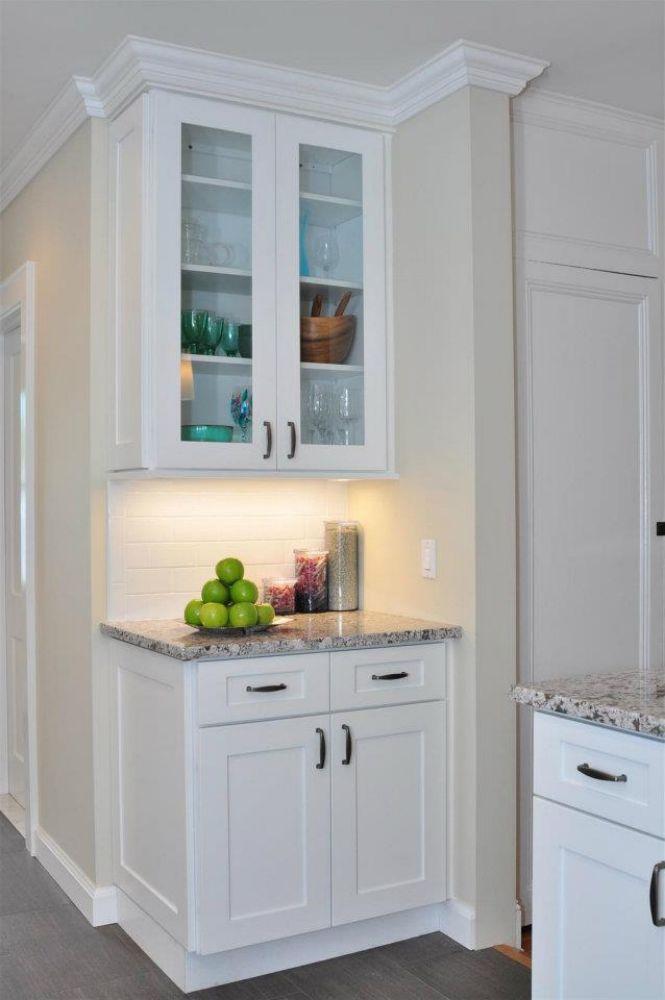Understanding the Importance of Avoiding Harmful Chemicals in Cabinetry
Homeowners today are more conscious than ever about the materials they bring into their living spaces. As awareness about indoor air quality and environmental safety continues to grow, avoiding harmful chemicals in cabinetry has become an essential priority for creating healthy homes. Cabinets are a central part of kitchens, bathrooms, and storage areas, yet they can also be a significant source of indoor pollution when made with toxic adhesives, finishes, and materials.
By focusing on Avoiding Harmful Chemicals in Cabinetry, homeowners can ensure their furniture and storage solutions contribute to a cleaner, safer environment for their families. Greenguard Gold Certified Cabinets, for example, are designed to meet strict emission standards, minimizing exposure to volatile organic compounds (VOCs) and other harmful substances commonly found in traditional cabinetry.
The Connection Between Cabinet Materials and Indoor Air Quality
Cabinets are often made from engineered woods like particleboard or MDF (medium-density fiberboard), which are held together with adhesives and resins that release VOCs, including formaldehyde. Over time, these chemicals “off-gas” into your home, contributing to indoor air pollution.
When focusing on avoiding harmful chemicals in cabinetry, choosing low-emission or non-toxic materials becomes essential. Certified cabinets such as those under the Greenguard Gold label ensure your home remains free from dangerous pollutants, maintaining optimal indoor air quality for your family’s comfort and health.
What Are Volatile Organic Compounds (VOCs)?
To understand avoiding harmful chemicals in cabinetry, one must first know what VOCs are. VOCs are gases emitted from certain solids or liquids, including paints, adhesives, and finishes. Common VOCs found in cabinetry include formaldehyde, benzene, and toluene—chemicals known to cause irritation, allergies, and, with long-term exposure, even more severe health effects.
By selecting cabinets with low or zero VOC finishes, homeowners can significantly reduce these emissions, creating a healthier living environment free from toxic air contaminants.
The Dangers of Formaldehyde in Cabinet Construction
Formaldehyde is one of the most widespread pollutants in modern cabinetry. It is used in adhesives and coatings to bind composite wood products. When released into the air, even in small amounts, it can cause eye, nose, and throat irritation, as well as respiratory problems and long-term health risks.
Avoiding harmful chemicals in cabinetry starts with eliminating formaldehyde-based materials and replacing them with safer alternatives such as no-added-formaldehyde (NAF) or ultra-low-emitting formaldehyde (ULEF) panels. These eco-friendly materials ensure that your cabinets remain safe throughout their lifespan, without releasing toxic fumes into your home.
Safer Alternatives: Low-Emission and Certified Materials
When it comes to avoiding harmful chemicals in cabinetry, opting for certified low-emission products is one of the most effective steps homeowners can take. Greenguard Gold Certified cabinets, for example, undergo rigorous testing to meet strict indoor air quality standards.
These cabinets are made with safe adhesives, non-toxic finishes, and responsibly sourced wood. The certification guarantees that harmful emissions remain at levels safe for even the most sensitive environments, such as homes with children, seniors, or individuals with respiratory conditions.
How Finishes and Paints Affect Health
The finishes applied to cabinetry can greatly influence indoor air quality. Traditional oil-based paints and varnishes contain solvents that release VOCs long after installation. These compounds contribute to poor indoor air conditions and unpleasant odors.
By focusing on avoiding harmful chemicals in cabinetry, homeowners should choose water-based or plant-based finishes that emit little to no VOCs. These alternatives not only protect your health but also maintain the natural beauty of wood without compromising durability or style.
Adhesives and Glues: The Hidden Pollutants
One of the often-overlooked contributors to indoor air pollution is the adhesives used in cabinetry construction. Many standard glues contain formaldehyde and other hazardous compounds.
To achieve avoiding harmful chemicals in cabinetry, selecting cabinets built with eco-friendly adhesives such as soy-based or water-based resins is crucial. These non-toxic alternatives offer excellent bonding strength while ensuring the final product remains emission-free and environmentally responsible.
The Role of Certification in Safer Cabinetry
Certifications play an essential role in verifying the safety and sustainability of cabinetry. Homeowners looking to prioritize avoiding harmful chemicals in cabinetry should look for certifications such as:
-
Greenguard Gold Certification – Guarantees products meet strict chemical emission limits.
-
CARB Phase 2 Compliance – Regulates formaldehyde emissions in composite wood products.
-
EPA TSCA Title VI Certification – Ensures compliance with national indoor air quality standards.
-
FSC Certification – Verifies that wood materials are sourced from responsibly managed forests.
These certifications collectively confirm that the cabinetry you choose contributes to a cleaner and safer home environment.
Sustainable Manufacturing Practices
Avoiding harmful chemicals in cabinetry also means supporting manufacturers who implement sustainable production methods. Companies that prioritize green manufacturing reduce waste, conserve energy, and use renewable resources in the creation of their products.
Greenguard Gold Certified cabinets, for instance, are produced with advanced technologies that minimize chemical use and ensure safety from factory to installation. Supporting these manufacturers promotes a culture of environmental responsibility that extends beyond your home.
Eco-Friendly Cabinet Materials for Modern Homes
Choosing the right materials is at the heart of avoiding harmful chemicals in cabinetry. Sustainable options include:
-
Solid hardwoods finished with low-VOC stains.
-
Bamboo, a fast-growing renewable resource that’s naturally formaldehyde-free.
-
Reclaimed wood, which reuses materials while adding unique character.
-
Low-emission plywood or MDF, bonded with water-based adhesives.
These materials reduce both environmental impact and exposure to harmful pollutants while maintaining the beauty and quality homeowners desire.
Protecting Children and Vulnerable Family Members
Children are among the most affected by indoor air pollution due to their developing respiratory systems. Avoiding harmful chemicals in cabinetry ensures that the air they breathe is free of toxins that could impact their health or development.
In homes with Greenguard Gold Certified cabinets, parents can rest assured that chemical emissions remain within safe levels. This helps prevent allergies, asthma, and other respiratory issues, allowing families to thrive in a healthier environment.
The Importance of Ventilation in Maintaining Air Quality
While selecting non-toxic cabinetry is critical, maintaining good ventilation further enhances air quality. Avoiding harmful chemicals in cabinetry should go hand-in-hand with ensuring adequate airflow throughout the home.
Ventilation systems, air purifiers, and regular air exchange help reduce any residual pollutants, ensuring that your Greenguard Gold Certified cabinets continue to contribute to a clean and safe environment.
Long-Term Benefits of Non-Toxic Cabinetry
The advantages of avoiding harmful chemicals in cabinetry extend beyond immediate health benefits. Low-emission cabinets maintain their integrity and appearance longer since they are less likely to degrade or discolor due to chemical reactions.
Additionally, investing in certified cabinetry enhances the overall value of your home. Eco-conscious buyers increasingly look for sustainable, toxin-free features when purchasing properties, making this a smart long-term investment.
Reducing Environmental Impact
Traditional cabinetry production often involves processes that release harmful substances into the atmosphere. Avoiding harmful chemicals in cabinetry supports eco-friendly manufacturing that reduces pollution, conserves natural resources, and protects biodiversity.
By choosing cabinets built from sustainably harvested wood and finished with non-toxic coatings, homeowners take an active role in reducing their environmental footprint. It’s a choice that benefits both your home and the planet.
Cleaning and Maintenance Tips for Non-Toxic Cabinets
Even eco-friendly cabinets require proper maintenance. Avoiding harmful chemicals in cabinetry also means using safe, natural cleaning methods. Avoid harsh chemical cleaners, which can reintroduce toxins into your home.
Instead, opt for mild, plant-based cleaners or a simple mixture of water, vinegar, and baking soda. These gentle solutions protect your cabinets’ finish while maintaining a healthy indoor environment.
The Role of Greenguard Gold Certified Cabinets
Greenguard Gold Certified Cabinets from My Kitchen Cabinets exemplify the standards of avoiding harmful chemicals in cabinetry. Each piece undergoes extensive testing to ensure it meets rigorous emission thresholds.
By incorporating sustainable materials, water-based adhesives, and low-VOC finishes, these cabinets combine luxury design with environmental responsibility. They not only enhance your home’s appearance but also serve as a long-term commitment to family health and ecological preservation.
How Non-Toxic Cabinets Improve Everyday Living
The impact of avoiding harmful chemicals in cabinetry goes beyond technical specifications—it transforms daily life. Cleaner air leads to better sleep, sharper focus, and greater overall comfort. Families experience fewer allergy flare-ups and a noticeable improvement in the freshness of their living spaces.
A toxin-free home also fosters peace of mind, knowing that every breath is safer and cleaner. This shift toward non-toxic living represents a healthier lifestyle choice that supports both physical and emotional well-being.
Common Misconceptions About Eco-Friendly Cabinets
Some homeowners mistakenly believe that sustainable or low-VOC cabinets are less durable or aesthetically limited. In reality, avoiding harmful chemicals in cabinetry does not compromise performance or style.
Modern eco-friendly cabinetry offers the same (if not superior) quality, durability, and customization options as traditional models. With advancements in materials and finishes, you can achieve any design aesthetic while maintaining a toxin-free environment.
Why Homeowners Are Making the Switch
With increasing awareness about indoor pollution and environmental impact, homeowners are rapidly adopting the principles of avoiding harmful chemicals in cabinetry. The modern consumer values transparency, sustainability, and long-term health benefits.
As more families discover the advantages of Greenguard Gold Certified Cabinets, they are realizing that safe, sustainable living doesn’t mean sacrificing design or affordability—it’s about making informed, responsible choices.
Conclusion: Building a Healthier Home Through Safer Cabinetry
In today’s world, avoiding harmful chemicals in cabinetry is not just a design preference—it’s a necessity. Every material, adhesive, and finish used in your home has a direct impact on the health of your family and the environment.
By choosing products like Greenguard Gold Certified Cabinets from My Kitchen Cabinets, homeowners can ensure that their living spaces are both beautiful and safe. These cabinets embody sustainability, durability, and wellness, providing a cleaner indoor atmosphere for generations to come.
Ultimately, avoiding harmful chemicals in cabinetry is about building more than just a stylish kitchen—it’s about creating a home that truly supports the well-being of everyone inside. Through careful selection and commitment to eco-friendly living, families can breathe easier, live healthier, and embrace a future built on sustainability and trust.

